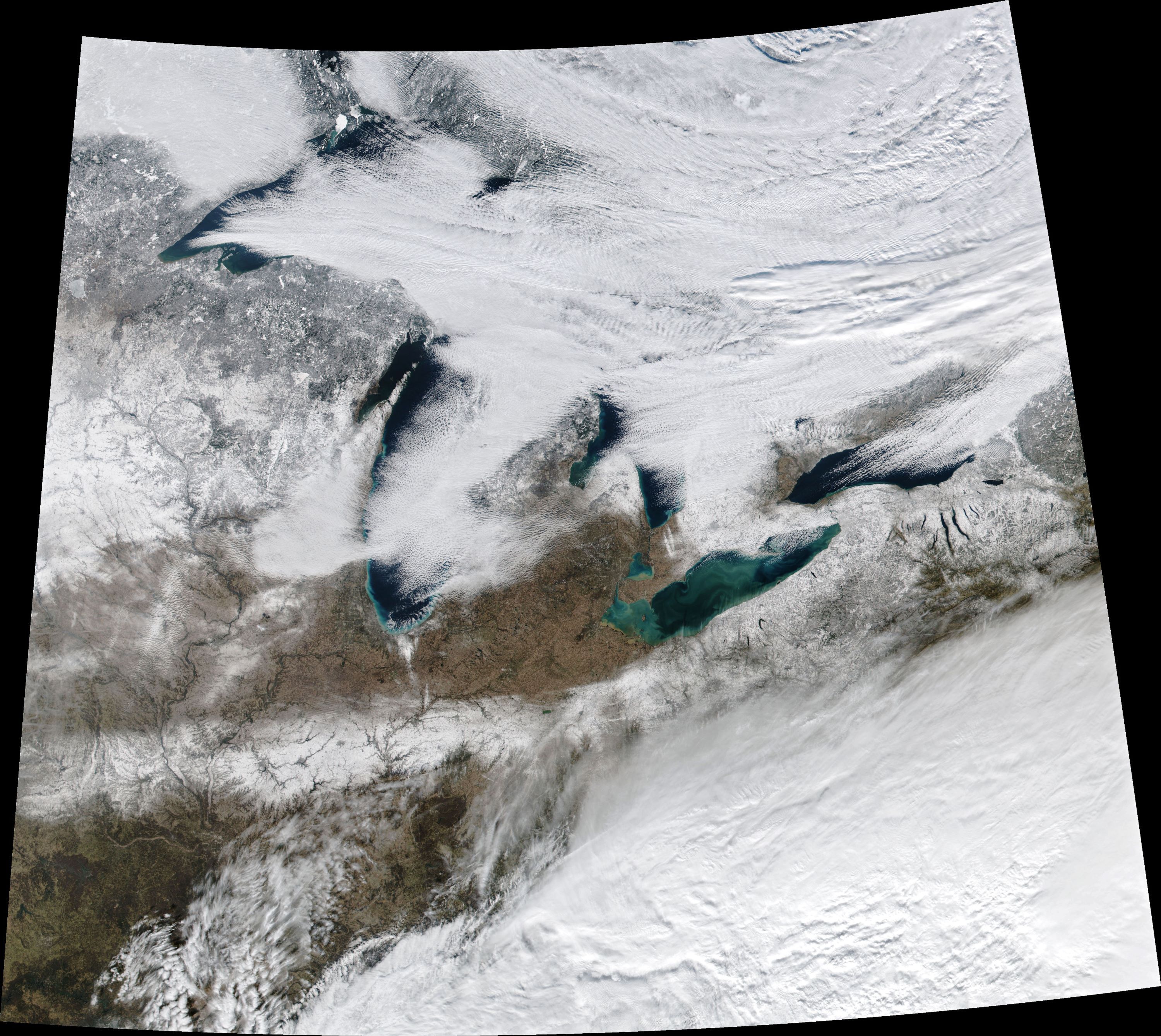[:ja]NASAの地球観測衛星Suomi NPPが撮影した冬の五大湖です。

五大湖は北緯42-50度と全般的に緯度が高く、かつ内陸であるため、冬は非常に寒いです。夏も、湖の水が冷却水の役割を果たしている影響もあって、気温の高くなる地域でも体感的には涼しく感じ、わりあい凌ぎ易くなっています。あまりに寒いため、五大湖はその大きさにもかかわらず、ほとんどの部分が冬季には結氷し、五大湖を経由する河川運輸は冬には停止されます。
地上の様子はこちらです。
参考文献: A Wintry Great Lakes Landscape (NASA Earth Observatory)
地球俯瞰画像を見る: LiVEARTH
[Earthview Wonders] No.914: Wintry Great Lakes🇺🇸
NASA’s Suomi NPP satellite captured the Great Lakes in winter.

The Great Lakes are a series of interconnected freshwater lakes primarily in the upper mid-east region of North America, on the Canada–United States border, which connect to the Atlantic Ocean through the Saint Lawrence River. The Great Lakes have a humid continental climate, and winter becomes severe without which halts over-the-water transportation.
The local scenery on the ground is as follows.
Reference: A Wintry Great Lakes Landscape (NASA Earth Observatory)
See earthview photo gallery: LiVEARTH[:en][Earthview Wonders] No.914: Wintry Great Lakes🇺🇸
NASA’s Suomi NPP satellite captured the Great Lakes in winter.

The Great Lakes are a series of interconnected freshwater lakes primarily in the upper mid-east region of North America, on the Canada–United States border, which connect to the Atlantic Ocean through the Saint Lawrence River. The Great Lakes have a humid continental climate, and winter becomes severe without which halts over-the-water transportation.
The local scenery on the ground is as follows.
Reference: A Wintry Great Lakes Landscape (NASA Earth Observatory)
See earthview photo gallery: LiVEARTH[:]
